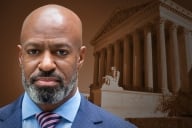You have /5 articles left.
Sign up for a free account or log in.
On one level, the National Association for College Admission Counseling would appear to have a good record on diversity. The group strongly favors affirmative action, and its annual meetings (and other meetings) have a strong focus on recruiting students of all races and ethnicities. It favors test-optional admissions. It opposes legacy admissions. Its CEO is a Latino man, Angel B. Pérez. He took over in 2020 when a Black woman, Joyce E. Smith, retired.
But at another level, NACAC isn’t that diverse at all—in its membership. A report being released today by the association, “DEI Challenges in the College Admission Counseling Profession,” makes that clear.
The report notes early on that a large percentage of professionals in higher education (and the admissions field specifically) are white.
| Position | Percent White |
| Higher education administrator | 86% |
| Chief enrollment officer | 82% |
| Chief admissions officer | 81% |
| NACAC member | 73% |
| College admissions counselor | 71% |
In contrast with those numbers, 48 percent of undergraduates are white, and 47 percent of public high school students are white.
“The diversity and climate of a campus—the policies and practices that reflect institutional priority on equity and inclusion—are critical for the successful engagement and outcomes of all students, and in particular for underserved students of color,” the report says. “College admission professionals, consisting of both school/college counselors (secondary) and enrollment management/admission professionals (postsecondary), are critical to helping students navigate their educational goals.”
Pérez said the report was about NACAC’s lack of diversity up until now. “This is our history, but not our future,” he said.
Changing that history will be difficult, he noted. Few people of any race start out in college or early in their careers aspiring to be a leader in enrollment management.
But he said colleges can change that. For example, most colleges have undergraduate tour guides. These guides play an important role in admissions, and many colleges recruit students from diverse backgrounds for the job, knowing that will make minority students on tours feel more comfortable. Why don’t admissions leaders at those institutions invite these tour guides to consider a career in admissions, not just a job, Pérez asked.
“There is a talent pool in admissions offices that is not examined,” he added.
As a Latino with a Ph.D., Pérez said, “I’m a bit of a unicorn.” And that’s the point of the report—he said everyone has to take responsibility for encouraging people to get the education and the experiences that will promote diversity in admissions.
“We have not created a pipeline in the profession,” he added.
The Work in Admissions
The report also details the work done in admissions.
“Standardized testing and college entrance exams, such as the SAT, ACT, and Advanced Placement tests, have historically disadvantaged students of color and students from lower socioeconomic backgrounds,” the report says. “Critics point to the racist origins of these assessments, the implicit bias inherent in their multiple choice design and content, their cost, and the unfair advantage white and affluent families have over other groups because they have access to better funded schools and extracurricular academic activities and tutoring.”
A more diverse profession would recognize these issues, the report said.
Similarly, there is the policy of legacy admissions, which generally today (even if not designed that way) favors white applicants. It is not surprising, the report said, that universities that have eliminated legacy admissions have seen gains in Pell Grant students and minority students.
And of course there is the issue of affirmative action, which the Supreme Court will consider this fall.
“While beyond the scope of this paper to examine in detail, one cannot discuss equity in college counseling and admission without mentioning race-conscious admissions,” the report said. “Legal decisions regarding race-conscious decisions cite the benefits of campus diversity for a 21st century workforce and society, as well as the cultivation of leadership that reflects all population segments.”








